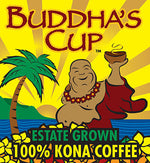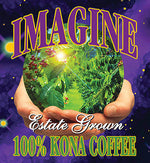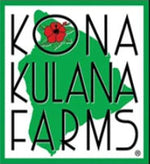If you’re curious about “how much caffeine is in cold brew,” you’ve come to the right place.
Cold brew draws in coffee fans for its smooth flavor and the steady lift it provides. People often think it’s the same as iced coffee, but it’s not. The method is unique and the result is a completely different experience.
This type of brew is made by steeping coffee grounds in cold water for 12 to 24 hours. Patience brings out a deep, mellow taste and a bigger boost.
Compared to traditional hot-brewed coffee, cold brew caffeine content depends on your coffee beans, your ratio, and how long you let it sit. Adjust these, and you can tailor your cup.
Looking for exceptional coffee? Check out our selection at Buddha’s Cup

Key Takeaways
- Cold brew coffee is made by soaking coffee grounds in cold water over 12 to 24 hours, which makes it have a smoother flavor and increased caffeine potential.
- How much caffeine is in cold brew varies, but it often contains more per serving than hot coffee due to the longer extraction process.
- Cold brew caffeine content is influenced by the type of coffee beans, the coffee-to-water ratio, and how long it steeps.
- If you want to manage your energy intake, you can easily adjust cold brew caffeine content by changing your brew method or dilution.
- Cold brew differs with iced coffee in terms of preparation as well as the level of caffeine that it can provide in a cup.
The Caffeine Content of Coffee Beans

The brewing process is where the magic begins, and it’s the first thing that sets iced coffee and cold brew apart. But before any water touches the grounds, the coffee bean itself plays a big role in how much caffeine ends up in your cup.
Different beans bring different strengths. Arabica beans are the most common in specialty coffee and tend to have a smoother, milder taste with moderate caffeine levels.
Robusta beans, in contrast, are bolder and deliver nearly twice as much caffeine per gram.
Kona beans, prized for their unique flavor and grown in Hawaii, generally fall closer to Arabica in caffeine content but are valued for their subtle, clean taste.
Here’s a simple comparison of caffeine content by bean type:
That’s not the only factor at play. Roast level also influences total caffeine content. Contrary to popular belief, lighter roasts usually retain a bit more caffeine than darker roasts, since prolonged roasting breaks down caffeine molecules over time.
Each time you pick up a bag of coffee, the origin, flavor notes, bean type, and roast all play a part in the energy that fills your mug.
Extraction Time Comparison
Extraction is the heart of brewing coffee. It’s the moment water meets ground coffee and starts to draw out everything: aroma, flavor, oils, and caffeine. Each brewing style has its own pace, its own story.
Caffeine is a natural compound found in coffee beans, and its concentration varies based on the type of bean and how it’s processed.
Arabica beans, for instance, generally contain less caffeine than Robusta beans.
However, Arabica is known for its smoother and more complex flavors, making it a popular choice for cold brew.
If you’ve ever waited for a coffee to brew, you’ve witnessed extraction in action:
- Hot brew: 4–5 minutes. Quick and familiar. The coffee is ready before you know it, bold and comforting.
- Espresso: Just 25–30 seconds. High pressure, intense heat, and a rich shot that delivers flavor and caffeine in an instant.
- Cold brew: 12–24 hours. This one takes patience. Coffee grounds sit in cold water overnight or longer, surrendering their character little by little.
Why wait so long for cold brew? Cold water moves slowly. It coaxes out flavors that hot water can sometimes rush past. The result is a smoother, less acidic drink. Cold brew is mellow but strong, especially if you use a bean like Arabica.
Think of cold brew as the slow burn. This process rewards your patience with a cup full of depth and subtlety.
Why Time and Temperature Matter
As we mentioned previously, cold water moves slowly.
When you pour it over coffee grounds, it doesn’t rush to pull everything out. Acids and caffeine dissolve less easily, so harsh flavors stay in the background. The first sip of cold brew feels gentle, not sharp.
Time makes up for what cold can’t do. Hours tick by. Slowly, more flavor and caffeine find their way into the crew. The process is patient, not hurried. Think of brewing as a curve. Hot coffee starts fast and strong, sometimes turning bitter.
Cold brew travels the middle path. It brings out the smooth notes and skips the extremes.
With cold brew, you get a mellow taste and steady energy. That’s the magic of letting time and temperature work together.
Brewing Methods and Caffeine Extraction
The brewing method shapes how much caffeine you’ll actually drink. Both water temperature and brew time matter.
Espresso uses high pressure and heat. The process is fast, just seconds, and produces a small, bold shot.
Pour-over is gentler. Hot water flows over the grounds, bringing out a lighter, balanced cup with moderate caffeine.
French press takes a slower path. Coffee steeps in hot water for several minutes, leading to a full-bodied brew and a medium caffeine kick.
Cold brew is in a league of its own. Coarse grounds soak in cold water for up to a day. The result is smooth, mellow, and often packs the most caffeine. Each method delivers a distinct flavor and energy experience. The choice is yours.
Which Brewing Method Is Strongest Per Ounce?

Ever wondered which coffee gives the deepest impact for each sip? Here’s a snapshot of caffeine per ounce for common methods:
Start with espresso: it’s intense. Little volume, big concentration.
Drip and pour-over are calmer. They fill the cup with clarity and comfort. French press balances richness with moderate caffeine, an immersive experience.
Cold brew per ounce can feel mild, but when sipped strong or in larger servings, the caffeine totals stack up.
A helpful guide by Taste of Home breaks down how strong each method is per ounce and explains why “strength” refers to caffeine density, while “stimulation” comes from the total caffeine you drink.
While a few espresso shots deliver a quick jolt, a tall cold brew can surpass them in overall caffeine.
Choose your strength, sip by sip or cup by cup.
Factors Affecting Caffeine Concentration in Cold Brew
Brew Time and Steeping Period
The longer the coffee grounds steep in water, the more caffeine will be extracted. Steeping for too long can result in bitter flavors. Finding the sweet spot, usually around 12 to 24 hours, will give you a smooth flavor.
If you steep for 12 to 16 hours, you’ll get plenty of caffeine and a balanced flavor.
Go up to 18 or 24 hours, and your cold brew will likely be stronger, but it may turn more bitter.
Where you brew matters too. Cold brew in the fridge takes longer and gives a mellower taste. Brewing at room temperature speeds things up, resulting in a stronger, sometimes harsher cup.
Coffee-to-Water Ratio
The ratio of coffee grounds to water also impacts the caffeine content.
A higher ratio of coffee to water will result in a stronger brew, both in flavor and caffeine concentration.
For those looking to control the strength of their cold brew, adjusting this ratio is key.
A good rule of thumb is to start with a 1:4 coffee-to-water ratio and adjust according to your taste preferences. For a milder cup, try a 1:6 ratio. The higher the ratio of coffee to water, the more caffeine and flavor you’ll extract.
If you want a smooth, ready-to-drink option, our Kona Kulana Cold Brew makes it easy to enjoy perfectly balanced cold brew at home.
Grind Size and Surface Area
Another thing is the grind size of your coffee beans. Finer grinds also provide a greater surface area to come in contact with water, which results in faster caffeine extraction.
Cold brew, however, usually needs a coarser grind in order to avoid over-extraction and bitterness.
More surface area means faster extraction, but for cold brew, a coarse grind is best. It slows down extraction, keeps flavors smooth, and makes filtering easy. For best results, use a burr grinder to keep your grounds even and consistent every time.
Should You Change Grind Size to Control Caffeine?

Considering making some changes to your grind size in order to extract more caffeine out of your cold brew? It may seem to be a good idea, however, it actually isn’t.
Grind size affects the flavor of your coffee much more than the caffeine content. If you go finer, you risk over-extraction. Your drink could turn harsh or muddy. For cold brew, a coarse grind brings out a clean, mellow taste every time.
If you want to control how much caffeine lands in your cup, adjust the steep time or the coffee-to-water ratio instead. These changes are reliable and let you fine-tune both strength and flavor.
Let your grind stay coarse. Adjust time and ratio to shape your perfect cold brew.
Standard Cold Brew vs Concentrated Cold Brew
When it comes to cold brew, you might encounter two main types: standard cold brew and concentrated cold brew.
The standard version is ready to drink. Pour it over ice, sip, and enjoy. Concentrated cold brew is different. It’s brewed extra strong and is meant to be diluted with water or milk before consumption.
Common dilution practices are simple. Many people use a 1:1 ratio, with equal parts concentrate and water. For a lighter drink, try a 1:2 ratio, using one part concentrate and two parts water or milk.
Concentrated cold brew has a higher caffeine content before dilution. Once diluted, the caffeine per serving drops, making it similar to regular cold brew.
Here’s a quick chart to show the difference:
Measuring Caffeine in Cold Brew
Wondering how much caffeine is in your cold brew? It can be tricky to pinpoint, but here’s what you need to know:
- Exact measurements require lab testing. This isn’t practical for most people, so home brewers rely on estimation.
- Many factors shape the final caffeine content:
- Steep time
- Grind size
- Water temperature
- Coffee-to-water ratio
- Bean type
- Dilution practices
- Small changes make a big difference. Even if you follow the same recipe, your caffeine level can shift from batch to batch.
- Caffeine calculators are a useful tool. Input your brewing details and you’ll get a rough estimate, but treat these results as a general guide.
- You don’t need to be exact. Focus on finding the right balance for your taste and energy, using these methods to help you along the way.
How to Estimate Caffeine in Your Home Brew
Start simple. Arabica beans contain about 8 to 15 mg of caffeine per gram.
Here's a quick way to estimate your caffeine:
- Weigh your coffee grounds in grams.
- Multiply that number by 12 (for a rough upper estimate).
For example: 50 g of Arabica beans × 12 mg = 600 mg of caffeine before dilution.
A lot goes into how strong your coffee turns out. Steep time, grind size, bean type, and how much water you use all make a difference. Still, this basic calculation gives you a solid starting point.
Want more precision later? Adjust with experiment and taste. You'll learn your brew's unique profile, one sip at a time.
Typical Caffeine Levels in Cold Brew
Cold brew caffeine levels can swing widely, from homemade batches to café versions and concentrates.
A homemade 8 oz cup typically contains between 80 and 100mg, though strong recipes can reach up to 200mg. Starbucks’ 16oz cold brew carries about 205mg of caffeine. Dunkin’ serves a 16 oz version with roughly 174 mg.
Cold brew concentrate is much stronger, typically 35-60 mg per ounce, which becomes 280-400 mg once diluted.
For comparison, an espresso shot has ~63 mg, an 8 oz drip coffee about 95 mg, and most energy drinks ~75 mg.
Variability in Caffeine Content
Caffeine amounts change from cup to cup. Factors include the bean type, roast, grind, steep time, water temperature, and dilution.
Even humidity or the warmth of your grinder can shift caffeine levels. Homemade batches can be consistent, but café versions may vary depending on how they brew that day.
Average Caffeine Content in Standard Cold Brew
Starbucks’ 16oz cold brew contains about 205mg of caffeine. Dunkin’s 16oz version registers around 174mg.
Independent cafés generally fall in the range of 100-200 mg per 8oz cup. Homemade cold brews often span 100-300 mg, depending on bean strength, steep duration, and dilution.
Customizing Caffeine Levels
If you want to adjust your caffeine intake, it’s easy to do. Steep longer or use more coffee to increase caffeine. Steep less or dilute more to decrease it.
Even small tweaks make a notable difference. Start with a base recipe, taste, adjust, and find your perfect balance.
Once you’ve found your perfect balance, our Coffee Club makes it easy to keep it going. You’ll get fresh Kona coffee delivered each month, with free shipping, member pricing, and exclusive giveaways.
Health Considerations of Cold Brew Coffee
Cold brew offers a smooth, flavorful buzz, but it carries health considerations worth noting.
Caffeine tolerance, stomach comfort, hydration, and timing all influence your experience. When managed thoughtfully, cold brew can be both delightful and balanced.
Caffeine Sensitivity and Tolerance
Individuals respond to caffeine in different ways. Some are invigorated by a single drink, others hardly feel it.
Tolerance develops with regular coffee consumption, and it translates to the need to increase the amount of coffee to get the same euphoria. Symptoms such as headaches, irritability, or fatigue even after getting some caffeine could indicate that you have reached that plateau.
A short break of, say, one or two days, can reset your tolerance. Also, caffeine's half-life is about 5 to 6 hours, which means drinking late in the day can affect sleep quality.
Acidity and Stomach Sensitivity
Cold brew is easier on the stomach. Research published by Nature indicates that it is less acidic than hot coffee. That makes it easier on reflux and heartburn.
Nevertheless, caffeine of any kind can cause irritation of the gut lining. In case you experience discomfort after drinking, change your consumption or schedule. Your body’s response matters, not just chemistry.
Hydration and Dehydration Concerns
Coffee has a mild diuretic effect, but cold brew still counts toward hydration. A simple rule: drink equal amounts of water alongside your coffee. Pay attention to signs like dry mouth, headache, or fatigue. These may indicate mild dehydration.
Personalizing Your Cold Brew Caffeine Intake
Cold brew is a canvas, you decide how it feels. Here are three common profiles:
Casual Sipper: Steep 12 hours at a 1:6 ratio. Smooth, mellow, just enough caffeine.
Balanced Brewer: Go 16 hours at 1:4. Full flavor, moderate energy.
Power Drinker: Let it sit 24 hours at 1:3. Bold and strong.
To find your perfect brew, run small test batches. Change one thing at a time, maybe the steep time one day, the ratio the next. Taste and note the shifts.
For a creative touch, freeze cold brew into ice cubes. These melt slowly, gently releasing caffeine throughout your cup.
Best Cold Brew for Morning vs Afternoon
In the morning? Go bold. A full-strength cold brew, think medium to long steep with minimal dilution, delivers a satisfying energy burst when your day begins. It’s a smooth, long-lasting boost that sets a productive tone.
After 2 p.m., however, aim for something lighter. Diluting your cold brew or using a milder recipe helps avoid late-day jitters and sleep disruption.
Remember, caffeine’s half-life is about 5 to 6 hours. A smaller caffeine hit in the afternoon supports focus risking insomnia.
Looking for flavor without the caffeine? Try our Decaf Kona Coffee for a smooth, mellow cup any time of day.
Enjoying Cold Brew Responsibly

Enjoying cold brew starts with understanding what’s in your cup. Knowing how much caffeine is in cold brew lets you choose a balance that fits your routine. Some days call for an energizing boost, while others are better with a gentle lift.
Every step of the process matters. Steep time, grind size, and the coffee-to-water ratio all influence cold brew caffeine content.
Pay attention to these details and listen to how your body responds. Small changes can help you find your perfect cup.
See how Buddha’s Cup creates exceptional coffee for coffee lovers everywhere.
If you have questions or want to learn more about our coffee, reach out any time. Balance is always the key to enjoying your brew.
FAQs
How much caffeine is in a cold brew?
The caffeine level of a regular 8 oz cup of cold brew may differ considerably, with the usual amount being between 100 and 200 mg.
The amount of caffeine in cold brew varies with many factors such as coffee-to-water ratio, the kind of coffee bean, and the brewing time. Cold brew is usually brewed more concentrated than regular coffee and may be diluted prior to serving, both of which also influence the resulting cold brew caffeine concentration.
How does cold brew's caffeine content compare to hot coffee?
In general, the level of caffeine in cold brew is usually higher than the one in hot-brewed coffee. But this does not necessarily imply that your cup will contain more caffeine.
As an example, a double espresso shot may contain 80 mg of caffeine, whereas an 8 oz cup of drip coffee may contain between 80 and 100 mg.
Cold brew tends to be stronger, although the overall quantity you consume is the most important factor.
Can I adjust the caffeine content of my cold brew?
Yes, you can easily modify the amount of caffeine in cold brew by altering the amount of coffee compared to water, or by varying the steeping time. The longer you steep or the more coffee you use, the higher your cold brew caffeine will be.
Mixing your concentrate with water or milk will reduce the amount of caffeine per serving.
Is cold brew a good option for someone with a sensitive stomach?
Cold brew is considered by many to be less harsh on the stomach than hot-brewed coffee.
This is because it is less acidic, a fact made possible by the cold extraction process.
There are also fewer acids that may result in stomach discomfort, which makes cold brew a good option when one has acid reflux or is sensitive to acids.
But the reaction varies in everyone and some individuals might also feel uneasy about the caffeine levels in cold brew.
How do I know if I’m sensitive to caffeine?
Caffeine sensitivity varies from person to person. When you feel restless, nervous, have a fast heartbeat, or an upset stomach even in small quantities, you may be caffeine sensitive.
Sensitivity to cold brew caffeine content may also be indicated by the feeling of insomnia, jitters or anxiety after consuming cold brew.
Others might also experience caffeine-induced headaches or migraines.













